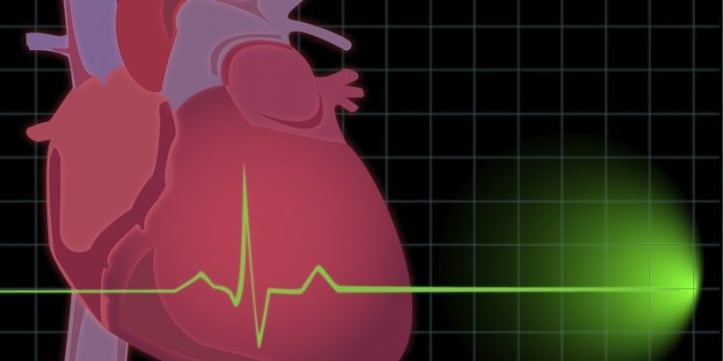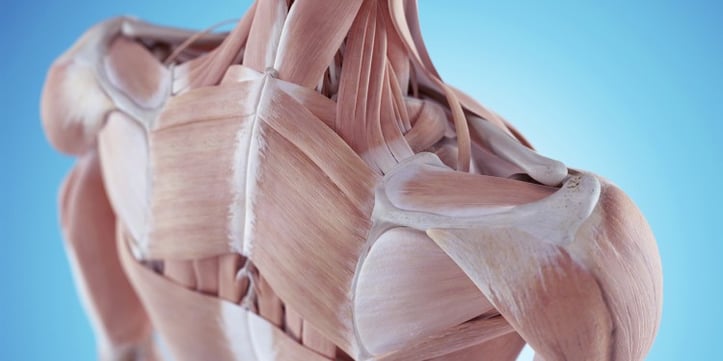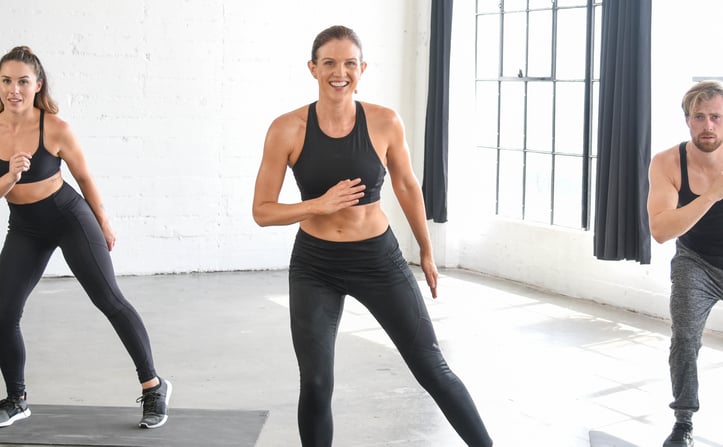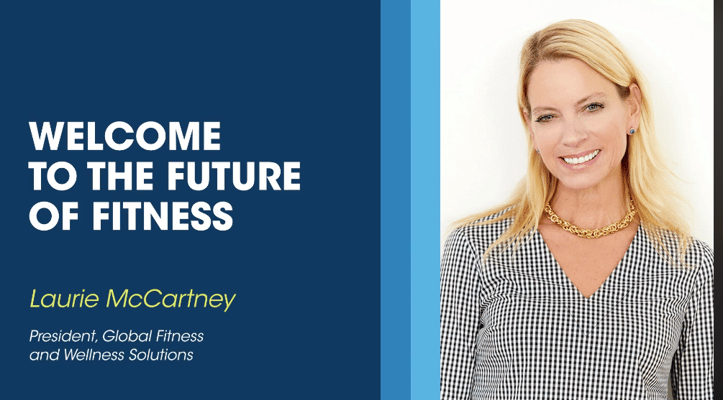
Unleash Your Fat-Burning Potential with EPOC
Introduction
In the quest for effective weight loss, understanding the concept of Excess Post-Exercise Oxygen Consumption (EPOC) can be a game-changer. EPOC, often referred to as the 'afterburn effect,' is a fascinating physiological phenomenon that occurs after intense exercise. In this blog post, we will delve into the science behind EPOC, explore its implications for weight loss, and provide you with practical strategies to maximize your fat-burning potential.
What is EPOC?
EPOC is the amount of oxygen consumed by the body after exercise to restore it to its pre-exercise state. During exercise, the body's oxygen consumption increases to meet the energy demands of the muscles. After exercise, the body continues to consume oxygen at a higher rate than normal to replenish energy stores, repair damaged tissues, and restore hormonal balance. This increased oxygen consumption is known as EPOC.
The Science Behind EPOC
The exact mechanisms behind EPOC are still not fully understood, but several factors contribute to its occurrence. One of the main factors is the increased metabolic rate that occurs after exercise. Intense exercise stimulates the body's metabolic rate, which can remain elevated for several hours or even days after the workout. This increased metabolic rate leads to a greater consumption of oxygen and calories, even at rest.
Another factor that contributes to EPOC is the breakdown of muscle glycogen. During exercise, the body uses glycogen (stored carbohydrates) as a source of energy. After exercise, the body needs to replenish its glycogen stores, which requires energy and oxygen. This process contributes to the increased oxygen consumption and calorie burn associated with EPOC.
Implications for Weight Loss
EPOC can have significant implications for weight loss. By increasing the body's metabolic rate and calorie burn, EPOC can help you burn more calories throughout the day, even when you are not exercising. This can be especially beneficial for individuals who are looking to lose weight or maintain a healthy weight.
In addition to increasing calorie burn, EPOC can also help you build muscle. Intense exercise stimulates the growth and repair of muscle tissue, which can lead to an increase in muscle mass. Muscle tissue is more metabolically active than fat tissue, which means that it burns more calories at rest. By increasing your muscle mass, you can increase your metabolic rate and burn more calories throughout the day, even when you are not exercising.
Strategies to Maximize EPOC
Now that you understand the science behind EPOC and its implications for weight loss, let's explore some strategies to maximize your fat-burning potential.
1. High-Intensity Interval Training (HIIT)
HIIT is a type of exercise that involves short bursts of intense exercise followed by periods of rest or low-intensity exercise. HIIT has been shown to be highly effective for increasing EPOC and burning fat. By alternating between short bursts of intense exercise and periods of rest, you can increase your metabolic rate and calorie burn, even after the workout is over.
Some examples of HIIT exercises include sprinting, jumping jacks, burpees, and mountain climbers. To perform a HIIT workout, choose an exercise that you can perform at a high intensity for 30 seconds to 1 minute, followed by a period of rest or low-intensity exercise for 1-2 minutes. Repeat this cycle for 20-30 minutes.
2. Resistance Training
Resistance training, such as weightlifting or bodyweight exercises, is another effective way to increase EPOC and build muscle. By challenging your muscles with resistance, you can stimulate the growth and repair of muscle tissue, which can lead to an increase in muscle mass and metabolic rate. In addition to increasing EPOC, resistance training can also help you tone your body and improve your strength and endurance.
Some examples of resistance training exercises include squats, lunges, push-ups, pull-ups, and planks. To perform a resistance training workout, choose 2-3 exercises that target different muscle groups and perform 2-3 sets of 8-12 repetitions of each exercise. Rest for 1-2 minutes between sets.
3. Eat a Balanced Diet
In addition to exercise, eating a balanced diet is essential for weight loss and overall health. A balanced diet should include a variety of fruits, vegetables, whole grains, lean proteins, and healthy fats. By eating a balanced diet, you can provide your body with the nutrients it needs to support your metabolism and energy levels, while also reducing your calorie intake.
Some tips for eating a balanced diet include:
- Choose whole, unprocessed foods: Whole, unprocessed foods are typically higher in nutrients and lower in calories than processed foods. Some examples of whole, unprocessed foods include fruits, vegetables, whole grains, lean proteins, and healthy fats.
- Control your portion sizes: Portion control is essential for weight loss. By controlling your portion sizes, you can reduce your calorie intake without feeling deprived. Some tips for controlling your portion sizes include using smaller plates and bowls, measuring your food, and avoiding eating directly from the package.
- Limit your intake of added sugars and unhealthy fats: Added sugars and unhealthy fats are typically high in calories and low in nutrients. By limiting your intake of added sugars and unhealthy fats, you can reduce your calorie intake and improve your overall health. Some examples of foods that are high in added sugars and unhealthy fats include processed foods, sugary drinks, fried foods, and fatty meats.
4. Get Enough Sleep
Getting enough sleep is essential for weight loss and overall health. When you don't get enough sleep, your body's metabolism can slow down, which can lead to an increase in appetite and a decrease in energy levels. In addition, lack of sleep can also affect your hormones, which can lead to an increase in fat storage and a decrease in muscle mass.
To get enough sleep, aim for 7-8 hours of sleep per night. Some tips for improving your sleep quality include:
- Establish a regular sleep schedule: Going to bed and waking up at the same time every day can help regulate your body's internal clock and improve your sleep quality.
- Create a comfortable sleep environment: Make sure your bedroom is quiet, dark, and cool. Use comfortable bedding and pillows, and consider using a white noise machine or earplugs to block out any noise.
- Avoid caffeine and electronics before bedtime: Caffeine and electronics can stimulate your brain and make it difficult to fall asleep. Avoid consuming caffeine and using electronics for at least an hour before bedtime.
Case Study: John's Weight Loss Journey
John is a 35-year-old man who was looking to lose weight and improve his overall health. He had tried several diets and exercise programs in the past, but he had always struggled to stick with them. After learning about EPOC and its implications for weight loss, John decided to give it a try.
John started by incorporating HIIT and resistance training into his exercise routine. He also made some changes to his diet, such as eating more whole, unprocessed foods and controlling his portion sizes. In addition, John made sure to get enough sleep every night.
After just a few weeks of following this new routine, John started to see some amazing results. He had lost 10 pounds and had gained some muscle mass. He also felt more energetic and had more confidence in himself.
John continued to follow this routine for several months, and he was able to lose a total of 30 pounds. He had also improved his overall health, including his blood pressure, cholesterol levels, and blood sugar levels.
One-Day Weight Loss Meal Plan Example
Here is a one-day weight loss meal plan example that provides approximately 1,500 calories and is rich in nutrients and fiber. This meal plan is designed to help you feel full and satisfied while also providing your body with the nutrients it needs to support your metabolism and energy levels.
Breakfast:
- Scrambled eggs with spinach and tomatoes: 2 eggs, 1/2 cup spinach, 1/4 cup tomatoes, 1 tablespoon olive oil, salt, and pepper to taste
- Whole grain toast: 2 slices whole grain toast
- Berries: 1/2 cup mixed berries
Calories: 400 Protein: 20g Carbohydrates: 40g Fat: 20g
Snack:
- Apple slices with almond butter: 1 medium apple, 2 tablespoons almond butter
Calories: 200 Protein: 6g Carbohydrates: 20g Fat: 12g
Lunch:
- Grilled chicken salad: 3 ounces grilled chicken, 2 cups mixed greens, 1/2 cup cherry tomatoes, 1/4 cup cucumbers, 1/4 cup red onions, 2 tablespoons balsamic vinaigrette
- Quinoa: 1/2 cup cooked quinoa
Calories: 400 Protein: 30g Carbohydrates: 40g Fat: 15g
Snack:
- Greek yogurt with honey and granola: 6 ounces Greek yogurt, 1 tablespoon honey, 1/4 cup granola
Calories: 250 Protein: 15g Carbohydrates: 30g Fat: 10g
Dinner:
- Baked salmon with roasted vegetables: 4 ounces baked salmon, 1 cup roasted vegetables (such as broccoli, cauliflower, and carrots), 1 tablespoon olive oil, salt, and pepper to taste
- Brown rice: 1/2 cup cooked brown rice
Calories: 450 Protein: 30g Carbohydrates: 40g Fat: 20g
Beginner's Guide to Fat-Burning Exercises
If you are new to exercise or looking to start a new fitness routine, here is a beginner's guide to fat-burning exercises that you can try.
1. Walking
Walking is a great way to get started with exercise. It is low-impact, easy on the joints, and can be done anywhere. To get the most out of your walking workout, try to walk at a brisk pace for at least 30 minutes per day.
2. Cycling
Cycling is another great low-impact exercise that can help you burn calories and improve your cardiovascular health. You can cycle outdoors or indoors on a stationary bike. To get the most out of your cycling workout, try to cycle at a moderate to high intensity for at least 30 minutes per day.
3. Swimming
Swimming is a great full-body workout that can help you burn calories and improve your cardiovascular health. It is also low-impact, which makes it a good option for people with joint problems. To get the most out of your swimming workout, try to swim at a moderate to high intensity for at least 30 minutes per day.
4. Strength Training
Strength training, such as weightlifting or bodyweight exercises, is an important part of any fitness routine. It can help you build muscle, increase your metabolism, and burn calories. To get the most out of your strength training workout, try to perform 2-3 sets of 8-12 repetitions of each exercise. Rest for 1-2 minutes between sets.
5. Yoga
Yoga is a great way to improve your flexibility, strength, and balance. It can also help you reduce stress and improve your overall health. To get the most out of your yoga workout, try to practice yoga for at least 30 minutes per day.
FAQ
1. How long does EPOC last?
The duration of EPOC can vary depending on several factors, such as the intensity and duration of the exercise, the individual's fitness level, and the type of exercise performed. In general, EPOC can last for several hours or even days after the workout.
2. Can I lose weight without exercise?
Yes, you can lose weight without exercise. However, exercise can help you burn more calories and improve your overall health. In addition, exercise can help you build muscle, which can increase your metabolic rate and help you burn more calories at rest.
3. What is the best time of day to exercise?
The best time of day to exercise depends on your personal preferences and schedule. Some people prefer to exercise in the morning, while others prefer to exercise in the afternoon or evening. The most important thing is to find a time that works for you and that you can stick with.
4. How often should I exercise?
The frequency of your exercise depends on your personal goals and fitness level. In general, it is recommended that you exercise at least 3-4 times per week. However, if you are new to exercise, it is important to start slowly and gradually increase the intensity and duration of your workouts.
5. What should I eat before and after exercise?
Before exercise, it is important to eat a small, balanced meal or snack that provides your body with the energy it needs to perform the workout. Some examples of pre-workout snacks include a banana, a handful of nuts, or a small protein shake.
After exercise, it is important to eat a meal or snack that provides your body with the nutrients it needs to recover and repair. Some examples of post-workout snacks include a protein shake, a piece of fruit, or a small meal of lean protein, vegetables, and whole grains.
Conclusion
EPOC is a fascinating physiological phenomenon that can have significant implications for weight loss. By understanding the science behind EPOC and implementing strategies to maximize your fat-burning potential, you can achieve your weight loss goals and improve your overall health. Remember to always consult with a healthcare professional before starting a new exercise or diet program, and to listen to your body and make adjustments as needed.
So, what are you waiting for? Start exploring the world of EPOC today and unleash your fat-burning potential!
Call to Action
This week, start by incorporating one of the strategies mentioned in this blog post into your routine. Whether it's adding a HIIT workout to your exercise schedule, making some changes to your diet, or getting more sleep, every small step counts. Remember, the key to success is consistency and perseverance. So, start today and make a commitment to yourself to live a healthier, happier life.

Fit vs Fat: Decoding Health's True Ruler

Pump Up Your Heart: Science-Driven Weight Loss

Wellness Technology: Your Path to Sustainable Weight Loss

A Sensible Guide to Dietary New Year's Resolutions

Prevent Shoulder and Rotator Cuff Injuries with Corrective Exercises

Overcome Fitness Plateaus: 4 Tips for Success

10 x 10 Thanksgiving Day Circuit: A Fitness Guide

Unleash Your Fitness Potential with Kit Rich's Training Secrets

The Future of Fitness: A Guide for Beginners to Intermediates

